While I was visiting San Diego’s Earth Day celebrations on Sunday, I took a quick detour into Balboa Park’s Botanical Building. It dates back to the 1914-15 Panama Pacific Exposition, and lays claim to being one of the largest lath structures in the world.
It was an odd feeling to leave the sun-drenched celebration of sustainable living outside and shift gears into the shaded, misted, and heavily watered Botanical Building. Humid and tropical, the interior reminded me of the over-watered vision of paradise that many people still think of when they think of California. Palms, cycads, begonias, orchids and other tropicals and subtropicals lazed in the shade or reached for the light dozens of feet overhead.
I usually go to public gardens and keep an eye out for things I’d like to have in my own garden. Gardens are amazingly democratic that way. If you look hard enough, you can often find some of the rarest plants, especially now with the web available to help source them.
In these days of looming water rationing, however, I felt a little queasy that the Botanical Building was showcasing all sorts of water-intensive plants San Diegans are trying not to fixate on so much these days. Our average temperatures enable the growth of these plants, our regular rainfall does not.
As I was thinking about that queasiness, I realized that many of the Balboa Park buildings nearby are museums that are full of unique objects or things that would be so far beyond my means to buy. The resources of these museums are focused on giving the public access to things and ideas they might not ordinarily encounter. I decided to try to think of the Botanical Building that way, as a sort of botanical museum. Although I could probably find many of its plants if I searched hard enough–and a few of them are actually totally common–I decided to try to look at and appreciate the plants as if they were museum objects I didn’t need to own.
And as my indignation started to lift, I started to be appreciative. Wasn’t it great that people in the city have a place where they can go visit some interesting plants but not have to worry about watering and caring for them? And the Botanical Building is free! If people decide to create little pockets of paradise at home, they don’t need to do their whole gardens this way. A little shaded corner could give you a lot of the same sense of coolness and shelter that the Botanical Building does.
In addition to the big lath house, Balboa Park offers a number of other plantings, including two succulent gardens. So it’s not like the park spends all its resources pimping an outdated vision of Southern California. And there’s value in seeing an old-school planting of this sort to help appreciate how local ideas about gardening have shifted.
So…back to my visit. Lots of things were in flower, but I ended up focusing on plants with variegated leaves that were used throughout the building. No forest would have so many variegated plants in so small a space, but this “garden museum” did a nice job in showcasing some of the botanical world’s interesting foliage patterns. Take a look…
(As usual you click on the images to enlarge them, especially if the signs in the thumbnails are too small to read…)
Cyclamen
Iresine herbstii

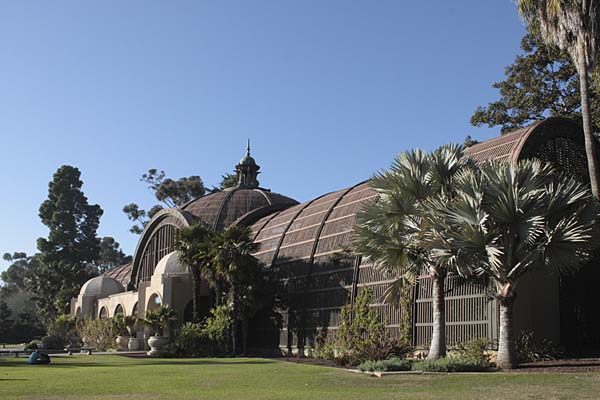



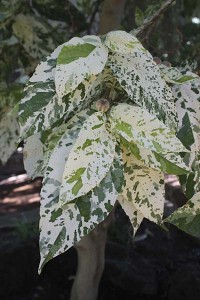
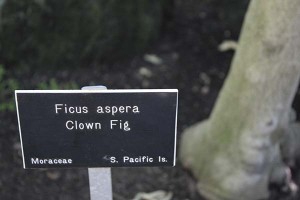
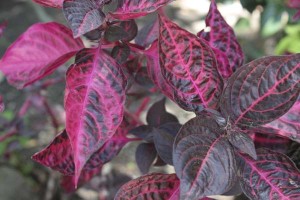
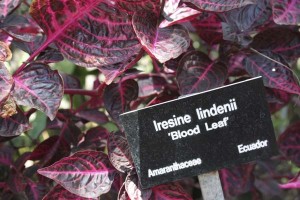
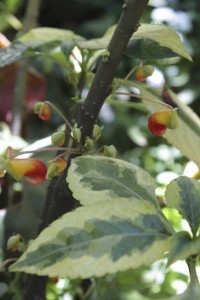
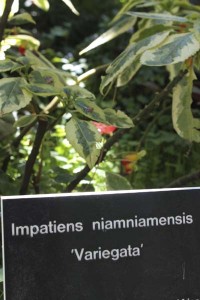
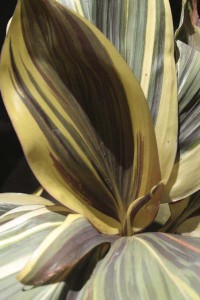




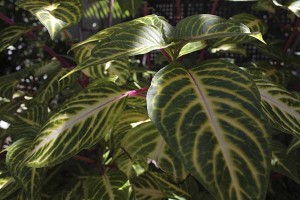

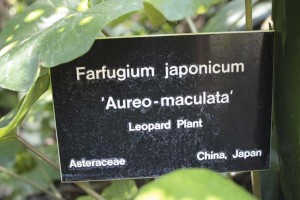


James, I feel the same way when I visit Hawaii! There may be 4 plants that grow there which I could grow in Portland and one of them is the Dandelion.;-) Besides, that is indeed what Museums are for. I mean, who’d want to date a Mummy?
it’s just astonishing, isn´t it?! i would love to a have a big garden where i could trie to build a smaller version, with my own hands of course!
What a neat house and wonderful variegation on those plants. I am partial to the white/green combos. I kind of agree with your with your indignation at all that water, but I figure everyone who waters is doing a small bit in the water cycle. Sooner or later it comes back to the ground (that is my fervent wish). And it is great folks can come and visit and not water it all themselves.